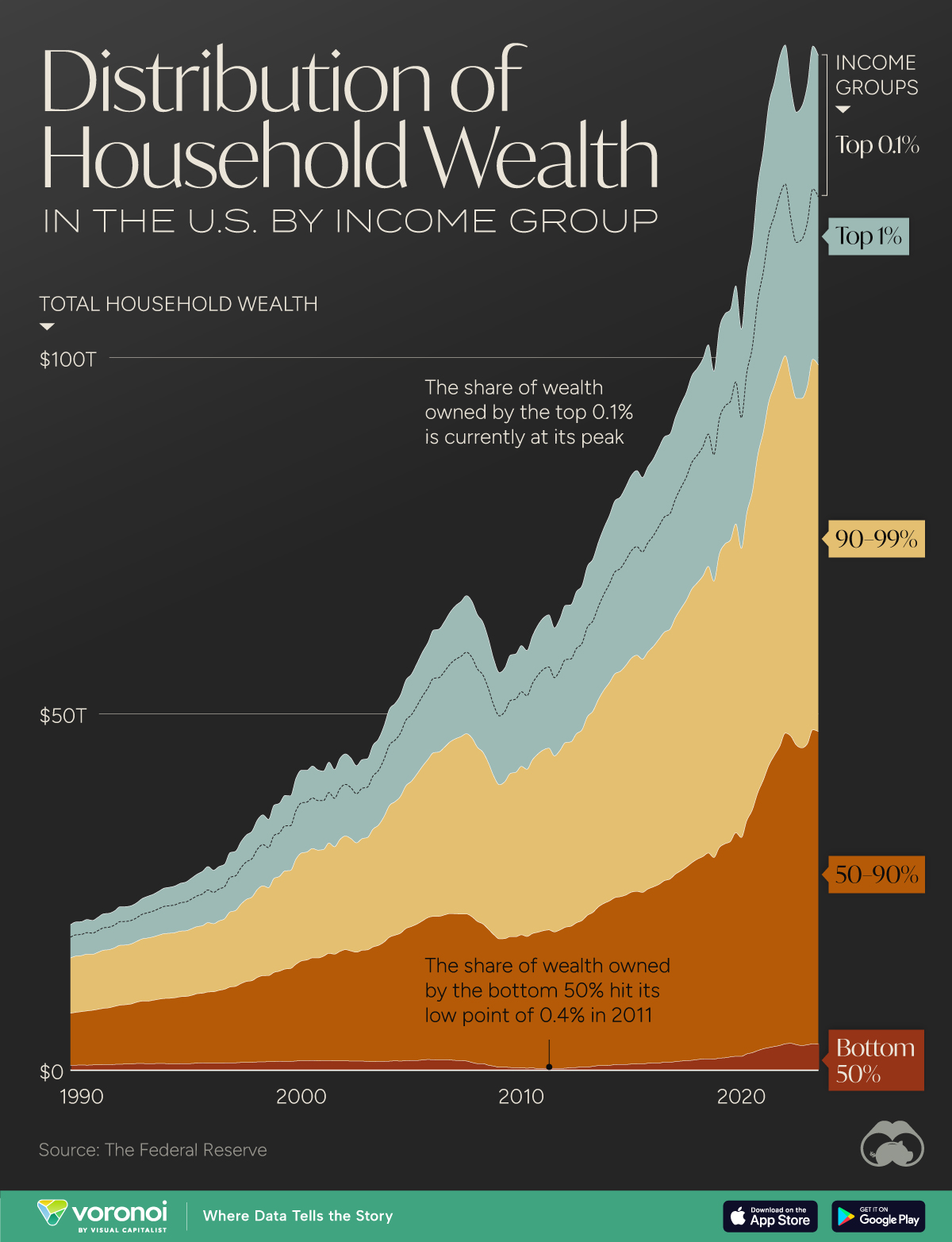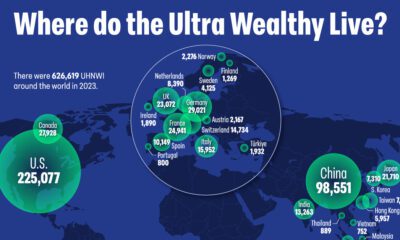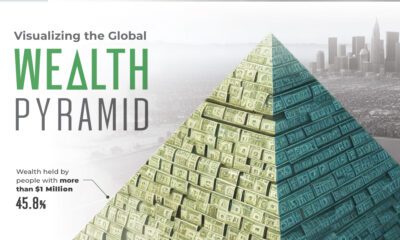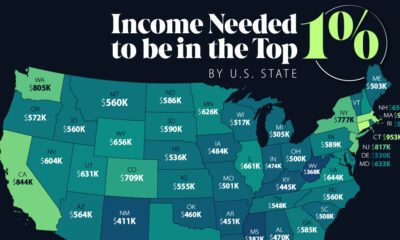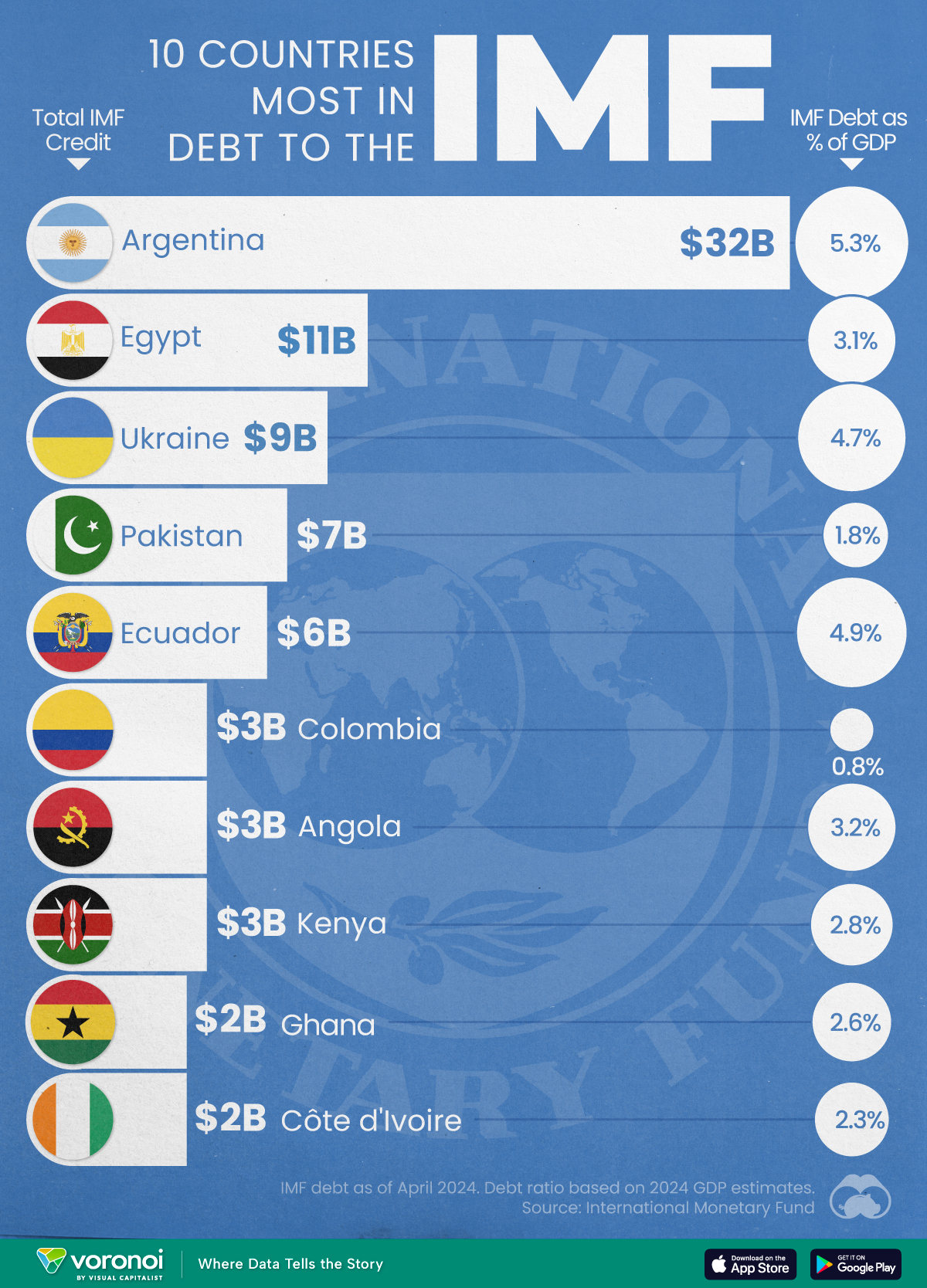Money
Visualizing Wealth Distribution in America (1990-2023)
![]() See this visualization first on the Voronoi app.
See this visualization first on the Voronoi app.
Visualizing Wealth Distribution in America
This was originally posted on our Voronoi app. Download the app for free on iOS or Android and discover incredible data-driven charts from a variety of trusted sources.
Wealth distribution in America has become increasingly concentrated since 1990.
Today, the share of wealth held by the richest 0.1% is currently at its peak, with households in the highest rung having a minimum of $38 million in wealth. Overall, roughly 131,000 households fall into this elite wealth bracket.
This graphic charts patterns in U.S. household wealth, based on data from the Federal Reserve.
Distribution of U.S. Household Wealth
Below, we show how the share of household wealth breaks down by wealth bracket:
| Share of Household Wealth | 2023 (%) | 2020 (%) | 2010 (%) | 2000 (%) | 1990 (%) |
|---|---|---|---|---|---|
| Top 0.1% | 14 | 13 | 11 | 10 | 9 |
| 99-99.9% | 17 | 18 | 18 | 17 | 14 |
| 90-99% | 36 | 38 | 40 | 36 | 37 |
| 50-90% | 31 | 29 | 31 | 34 | 36 |
| Bottom 50% | 3 | 2 | <1 | 3 | 4 |
Figures are as of Q4 for each year aside form 2023 where Q3 data was used based on the most recently available data.
With $20 trillion in wealth, the top 0.1% earn on average $3.3 million in income each year.
The greatest share of their wealth is held in corporate equities and mutual funds, which make up over one-third of their assets. Since 1990, their total share of wealth has grown from from 9% to 14% in 2023—the biggest jump across all wealth brackets.
In fact, the richest 0.1% and 1% were the only two rungs to see their share increase since 1990.
Meanwhile, the greatest decline was seen across the 50-90% bracket—households in the lower-middle and middle classes. Those in this rung have a minimum $165,000 in wealth with the majority of assets in real estate, followed by pension and retirement benefits.
Averaging $51,000 in wealth, the bottom 50% make up the lowest share, accounting for 3% of the wealth distribution in America. Income growth across this bracket has increased by over 10% between 2020 and 2022, higher than all other brackets aside from the top 1%.
Overall, the top 10% richest own more than the bottom 90% combined, with $95 trillion in wealth.
Markets
Top 10 Countries Most in Debt to the IMF
Argentina tops the ranking, with a debt equivalent to 5.3% of the country’s GDP.
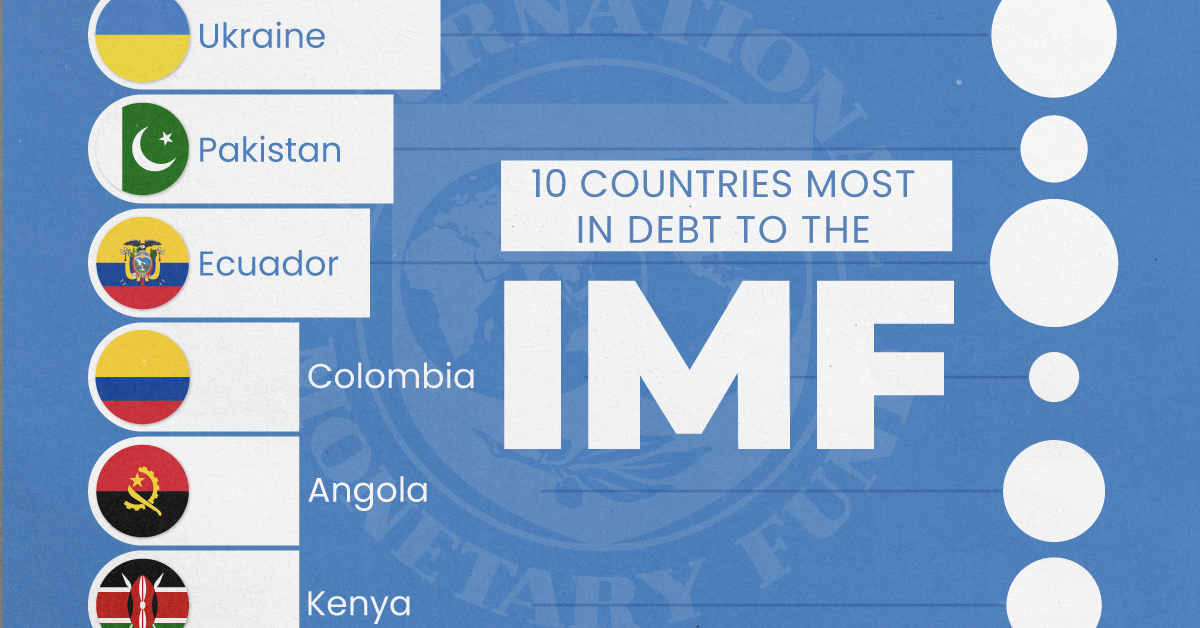
Top 10 Countries Most in Debt to the IMF
This was originally posted on our Voronoi app. Download the app for free on iOS or Android and discover incredible data-driven charts from a variety of trusted sources.
Established in 1944, the International Monetary Fund (IMF) supports countries’ economic growth by providing financial aid and guidance on policies to enhance stability, productivity, and job opportunities.
Countries seek loans from the IMF to address economic crises, stabilize their currencies, implement structural reforms, and alleviate balance of payments difficulties.
In this graphic, we visualize the 10 countries most indebted to the fund.
Methodology
We compiled this ranking using the International Monetary Fund’s data on Total IMF Credit Outstanding. We selected the latest debt data for each country, accurate as of April 29, 2024.
Argentina Tops the Rank
Argentina’s debt to the IMF is equivalent to 5.3% of the country’s GDP. In total, the country owns more than $32 billion.
| Country | IMF Credit Outstanding ($B) | GDP ($B, 2024) | IMF Debt as % of GDP |
|---|---|---|---|
| 🇦🇷 Argentina | 32 | 604.3 | 5.3 |
| 🇪🇬 Egypt | 11 | 347.6 | 3.1 |
| 🇺🇦 Ukraine | 9 | 188.9 | 4.7 |
| 🇵🇰 Pakistan | 7 | 374.7 | 1.8 |
| 🇪🇨 Ecuador | 6 | 121.6 | 4.9 |
| 🇨🇴 Colombia | 3 | 386.1 | 0.8 |
| 🇦🇴 Angola | 3 | 92.1 | 3.2 |
| 🇰🇪 Kenya | 3 | 104.0 | 2.8 |
| 🇬🇭 Ghana | 2 | 75.2 | 2.6 |
| 🇨🇮 Ivory Coast | 2 | 86.9 | 2.3 |
A G20 member and major grain exporter, the country’s history of debt trouble dates back to the late 1890s when it defaulted after contracting debts to modernize the capital, Buenos Aires. It has already been bailed out over 20 times in the last six decades by the IMF.
Five of the 10 most indebted countries are in Africa, while three are in South America.
The only European country on our list, Ukraine has relied on international support amidst the conflict with Russia. It is estimated that Russia’s full-scale invasion of the country caused the loss of a third of the country’s economy. The country owes $9 billion to the IMF.
In total, almost 100 countries owe money to the IMF, and the grand total of all of these debts is $111 billion. The above countries (top 10) account for about 69% of these debts.
-

 Money1 week ago
Money1 week agoCharted: What Frustrates Americans About the Tax System
-

 Politics6 days ago
Politics6 days agoCharted: How Americans Feel About Federal Government Agencies
-

 Healthcare7 days ago
Healthcare7 days agoWhich Countries Have the Highest Infant Mortality Rates?
-

 Demographics1 week ago
Demographics1 week agoMapped: U.S. Immigrants by Region
-

 Economy1 week ago
Economy1 week agoMapped: Southeast Asia’s GDP Per Capita, by Country
-

 Automotive1 week ago
Automotive1 week agoHow People Get Around in America, Europe, and Asia
-

 Personal Finance1 week ago
Personal Finance1 week agoVisualizing the Tax Burden of Every U.S. State
-

 Mining1 week ago
Mining1 week agoWhere the World’s Aluminum is Smelted, by Country

